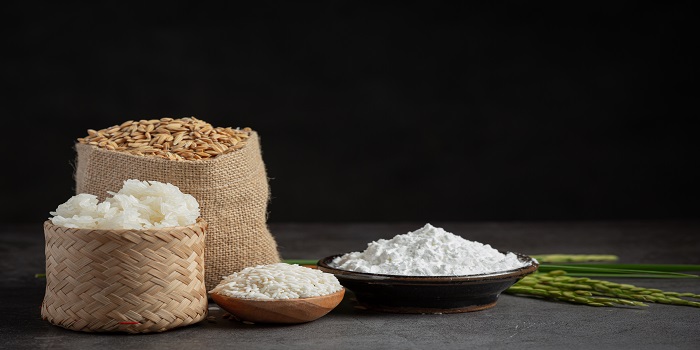Plastic has shaped industries and economies for decades, but its environmental cost is now too high to ignore. Petroleum-based plastics dominate packaging, consumer goods, and manufacturing, yet they linger in landfills and oceans for centuries. They generate toxic emissions, release microplastics, and put enormous pressure on ecosystems. This rising concern has forced businesses, governments, and consumers to look for alternatives. Bioplastics have emerged as one of the most practical and scalable solutions. Among them, starch-based bioplastics, often referred to as BioBased Polymer from Starch, stand out because they are affordable, versatile, and capable of reducing dependence on fossil fuels.
Bioplastics are not only about saving the planet; they are also about future-proofing industries. Companies that adopt sustainable materials build stronger brands, meet stricter environmental regulations, and appeal to eco-conscious customers. As the world moves toward greener economies, starch-based plastics are positioned at the center of this transition.
Detailed project report
Why Starch Is the Most Widely Used Source for Bioplastics
Starch is one of the most abundant natural polymers in the world. It comes from crops like corn, potatoes, wheat, and cassava. Its availability makes it a reliable raw material for large-scale production. Unlike many biopolymers, starch is cheap and easy to process. Industries can even use their existing plastic-processing equipment to manufacture starch-based plastics, which reduces the cost of switching to sustainable alternatives.
When treated with plasticizers such as water, glycerol, or sorbitol, starch turns into thermoplastic starch (TPS). Manufacturers mold this material into films, containers, and rigid products. TPS stays flexible, biodegradable, and blends easily with other polymers to gain strength and durability. By mixing starch with polylactic acid (PLA) or polyhydroxybutyrate (PHB), manufacturers achieve high-performance composites that rival conventional plastics in function while remaining eco-friendly.
The balance between affordability and functionality explains why starch-based plastics account for a major share of the global bioplastic market.
Key Benefits of Starch-Based Bioplastics
Cost Competitiveness
Starch-based plastics are among the least expensive bioplastics to produce. Starch is a byproduct of agriculture, and its supply remains stable. This ensures that companies can expand production without facing drastic price fluctuations.
Environmental Benefits
Starch-based plastics are biodegradable and compostable. Under suitable conditions, they break down into water, carbon dioxide, and biomass. Unlike traditional plastics, they leave behind no harmful residue. This property makes them ideal for single-use applications like packaging and agricultural films.
Ease of Processing
Industries can run their existing extrusion and molding machines to produce starch-based plastics. They don’t need heavy investments in new equipment, which lowers the entry barrier for businesses adopting sustainable practices.
Versatility
From thin films to rigid molded parts, starch-based plastics adapt to many applications. Additives can improve qualities such as moisture resistance, tensile strength, and thermal stability. This versatility makes them suitable for industries ranging from packaging to electronics.
Reduced Carbon Footprint
Since starch is derived from renewable crops, it reduces reliance on petroleum. Producing starch-based plastics also generates fewer greenhouse gas emissions, helping businesses align with global climate goals.
Preparation of Starch-Based Bioplastics
The production of starch-based plastics involves several steps:
Extraction – Starch is sourced from crops like corn, potatoes, and cassava.
Plasticization – Plasticizers break down starch’s crystalline structure, making it flexible and moldable.
Blending – Starch is combined with polymers like PLA or PHB for added strength and resilience.
Compounding – Additives improve durability, shelf life, and compostability.
Shaping – The final material is formed into films, sheets, or molded items using extrusion, blow molding, or injection molding.
The process produces thermoplastic starch, which manufacturers can use directly or blend into composites to improve performance.
To explore more, check our books
Applications of Starch-Based Plastics
Packaging
Packaging companies use starch-based plastics to make shopping bags, films, disposable cutlery, and food containers. Since people use these products only for a short time, their biodegradability gives them a clear advantage.
Agriculture
In agriculture, starch-based films serve as mulch covers, seed coatings, and compostable pots. These films decompose in soil, saving farmers from costly cleanup and improving soil quality.
Consumer Goods
Manufacturers now make disposable cups, straws, plates, toys, and textile fibers from starch plastics. These products offer safe and eco-friendly alternatives to petroleum-based materials.
Automotive and Electronics
Automotive manufacturers experiment with starch composites for car interiors, while electronics companies test them for casings and packaging. These uses reduce the carbon footprint of high-volume industries.
Medical Applications
Starch plastics show promise in biomedical engineering. Their biocompatibility makes them suitable for temporary implants, drug delivery systems, and wound care products.
Related article:- Eco-friendly Starch Bag – Bio-Based Polymer from Starch
Corn Starch Bioplastics: A Major Growth Driver
Among starch sources, corn dominates the market. Corn starch is easy to extract, abundant, and affordable. It plays a central role in packaging applications, which account for the largest share of bioplastic consumption. Corn starch bioplastics are compostable, safe for food contact, and effective in replacing single-use plastics.
Blending corn starch with PLA creates biodegradable composites with good strength and heat resistance. These are widely used in food packaging, bags, and agricultural films. Since governments around the world are banning or taxing conventional plastics, corn starch-based alternatives are seeing rapid growth.
Properties of Starch-Based Bioplastics
Starch-based plastics offer properties that make them suitable for industrial adoption:
Biodegradability – They decompose naturally under composting conditions.
Thermoplasticity – With plasticizers, they can be molded like petroleum-based plastics.
Customizability – Additives can improve flexibility, water resistance, and durability.
Compatibility – They blend well with PLA, PHB, and other biopolymers for stronger composites.
However, they also face challenges. Pure starch plastics have low moisture resistance and mechanical strength, which limits their applications. This is why most starch-based products are composites rather than pure starch films.
Market Potential and Growth Outlook
The global bioplastics market is growing steadily, and starch-based plastics hold a significant share. Rising government regulations against single-use plastics, combined with consumer demand for sustainable packaging, are driving adoption. Packaging alone accounts for more than half of the global bioplastics demand, with agriculture and consumer goods also contributing strongly.
Developing countries like India are seeing strong growth due to government initiatives, urbanization, and a booming retail sector. The demand for eco-friendly packaging is especially high in food delivery and e-commerce, where disposable plastics dominate.
Companies are also investing in research to improve starch plastic properties, making them more durable and water-resistant. These innovations will expand their use into industries like automotive and electronics.
Role of NIIR Project Consultancy Services
For entrepreneurs and businesses looking to enter the starch-based plastics sector, reliable guidance is crucial. Organizations such as Niir Project Consultancy Services (NPCS) provide detailed project reports, market surveys, and techno-economic feasibility studies. Their expertise helps entrepreneurs understand raw material requirements, investment costs, machinery needs, and expected returns. With professional support, companies can reduce risks and launch operations successfully in this growing sector.
Conclusion
Starch-based bioplastics are more than just an eco-friendly alternative to petroleum plastics. They are affordable, adaptable, and aligned with global sustainability goals. With applications across packaging, agriculture, consumer goods, and even medical fields, they hold immense potential for industrial growth. Corn starch, in particular, has become a leading raw material due to its availability and low cost.
As the world pushes for greener economies, starch-based plastics will continue to expand their role in manufacturing. Companies that adopt them early can stay competitive, meet environmental regulations, and appeal to eco-conscious consumers. With the support of organizations like NIIR Project Consultancy Services, entrepreneurs and businesses can enter this market with confidence. The future of manufacturing is not only profitable but also sustainable, and starch-based bioplastics are set to play a central role in shaping it.
Discover the best business ideas for yourself using our startup selector tools.
Frequently Asked Questions
What are bio-based polymers made from starch?
Bio-based polymers from starch are a class of biodegradable plastics that use starch as the primary raw material. Starch from sources like corn, potatoes, or cassava is processed and modified to create a polymer that can be melted and shaped, similar to traditional plastics.
How do starch bags differ from traditional plastic bags?
Unlike traditional plastic bags made from petroleum, starch bags are made from a renewable resource and are designed to be biodegradable and compostable. They break down in a composting environment, reducing their environmental impact and helping to address plastic pollution.
Are starch bags durable enough for everyday use?
Yes, starch bags are formulated to be durable for applications like grocery shopping and waste disposal. They can be made with various thicknesses and strengths to meet different needs while retaining their ability to decompose after use.
What happens to starch bags when they are composted?
When composted, starch bags are broken down by microorganisms into natural components like water, carbon dioxide, and biomass. This process returns nutrients to the soil and does not leave behind harmful microplastics.
What are the primary advantages of a business focused on starch bags?
The main advantages include addressing the growing consumer and regulatory demand for sustainable packaging, accessing new markets focused on environmental responsibility, and creating a product that offers a clear, eco-friendly alternative to conventional plastics.






